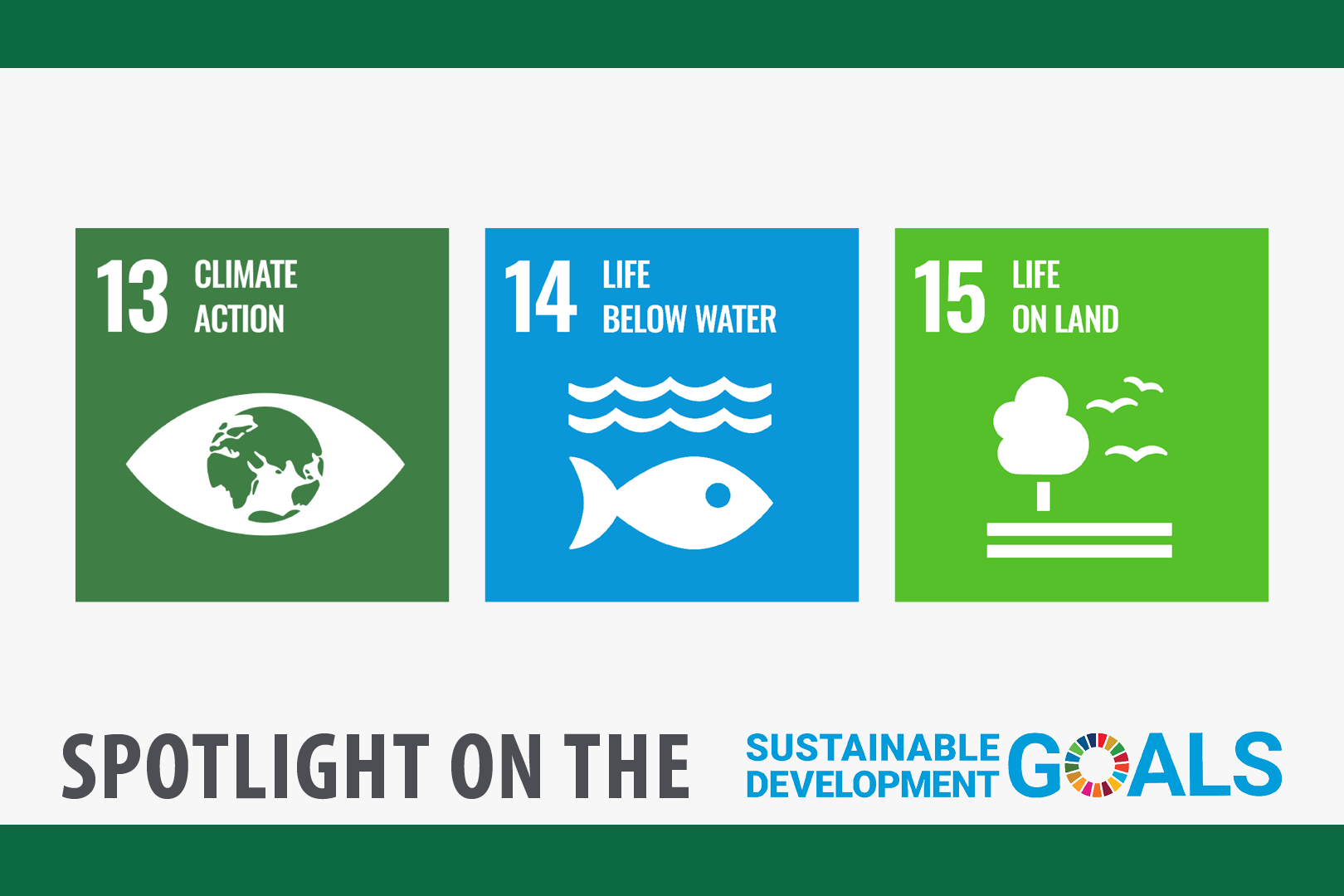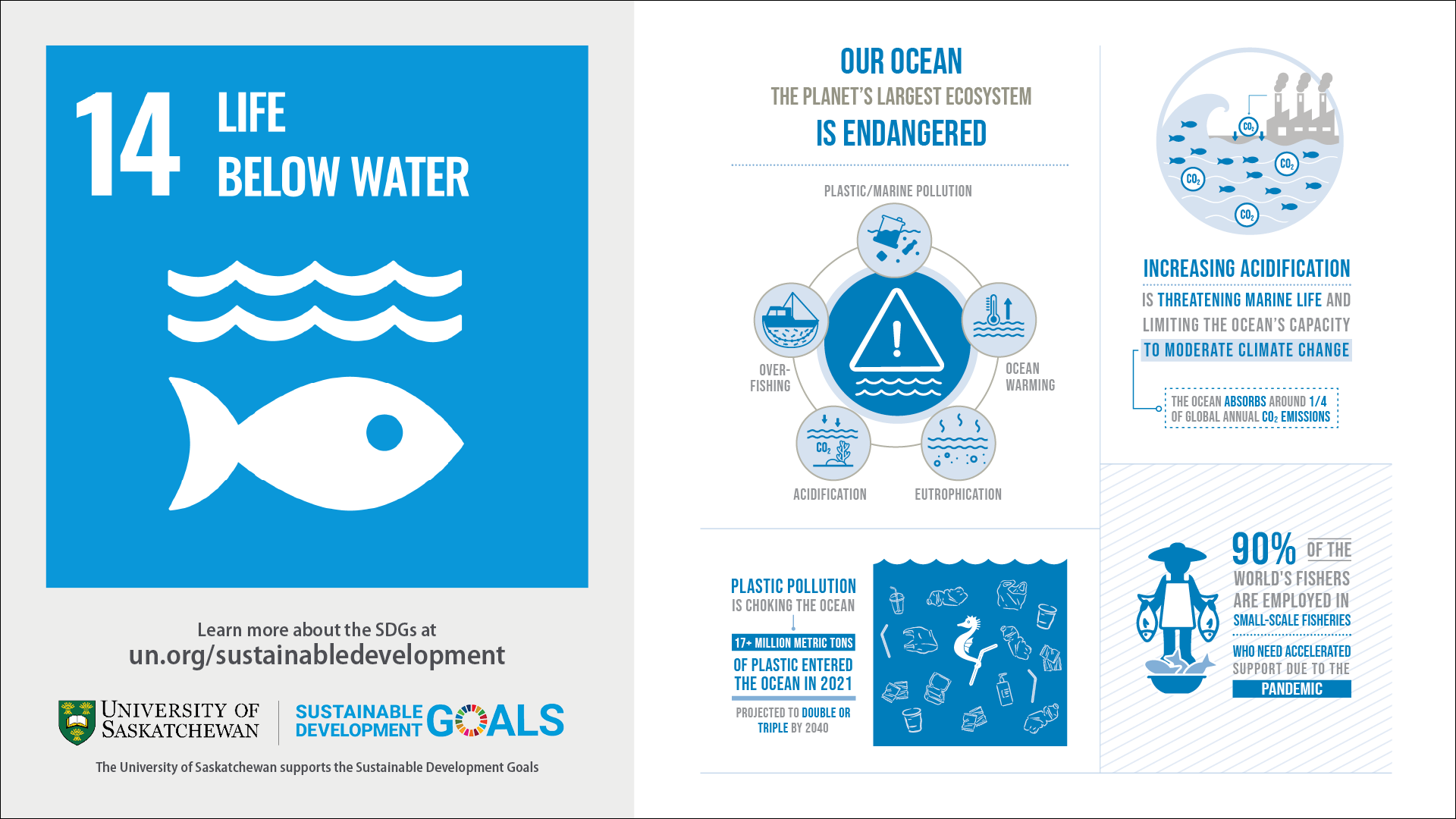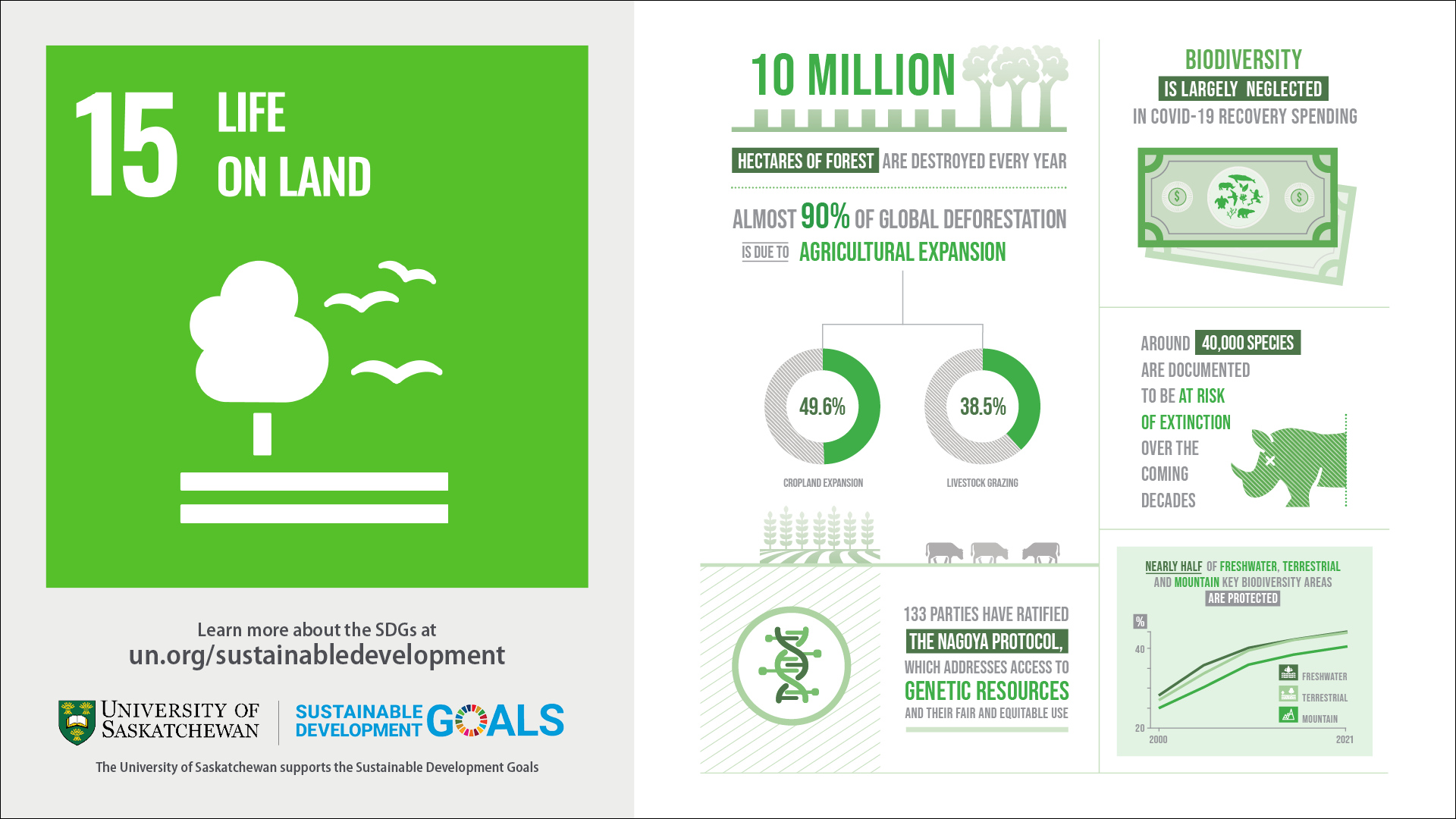
SDG Spotlight: Goals 13, 14, and 15
Take urgent action to combat climate change and its impacts. Conserve and sustainably use the oceans, seas and marine resources. Sustainably manage forests, combat desertification, halt and reverse land degradation, halt biodiversity loss.
The global temperature has already risen 1.1ºC above the pre-industrial level, with glaciers melting and the sea level rising. Impacts of climate change also includes flooding and drought, displacing millions of people, sinking them into poverty and hunger, denying them access to basic services, such as health and education, expanding inequalities, stifling economic growth and even causing conflict. 2By 2030, an estimated 700 million people will be at risk of displacement by drought alone.
Taking urgent action to combat climate change and its devastating impacts is therefore an imperative to save lives and livelihood, and key to making the 2030 Agenda for Sustainable Development and its 17 Goals – the blueprint for a better future – a reality.
In 2020, concentrations of global greenhouse gases reached new highs, and real-time data point to continued increases. As these concentrations rise, so does the Earth’s temperature. In 2021, the global mean temperature was about 1.1°C above the pre-industrial level (from 1850 to 1900). The years from 2015 to 2021 were the seven warmest on record.
To limit warming to 1.5° Celsius above pre-industrial levels, as set out in the Paris Agreement, global greenhouse gas emissions will need to peak before 2025. Then they must decline by 43 per cent by 2030 and to net zero by 2050. Countries are articulating climate action plans to cut emissions and adapt to climate impacts through nationally determined contributions. However, current national commitments are not sufficient to meet the 1.5°C target.
As countries move toward rebuilding their economies after COVID-19, recovery plans can shape the 21st century economy in ways that are clean, green, healthy, safe and more resilient. The current crisis is an opportunity for a profound, systemic shift to a more sustainable economy that works for both people and the planet.
SOURCE
- Learn more about Sustainable Development Goal (SDG) 13
- Download the PDF "CLIMATE ACTION: WHY IT MATTERS"

Goal 14 is about conserving and sustainably using the oceans, seas and marine resources. Healthy oceans and seas are essential to human existence and life on Earth. They cover 70 per cent of the planet and provide food, energy and water. The ocean absorbs around one quarter of the world’s annual carbon dioxide (CO2) emissions, thereby mitigating climate change and alleviating its impacts.
It is essential to conserve and sustainably use them. Yet, human activity is endangering the oceans and seas – the planet’s largest ecosystem – and affecting the livelihoods of billions of people.
Ocean conservation and action should not come to a halt while we tackle the COVID-19 pandemic. We need to look at long-term solutions for the health of our planet as a whole. Our lives depend on a healthy planet.
The health of the ocean is intimately tied to our health. According to UNESCO, the ocean can be an ally against COVID-19: Bacteria found in the depths of the ocean are used to carry out rapid testing to detect the presence of COVID-19. And the diversity of species found in the ocean offers great promise for pharmaceuticals.
The pandemic offers an opportunity to revive the ocean and start building a sustainable ocean economy. A report by the United Nations Economic and Social Commission for Asia and the Pacific suggests that the temporary shutdown of activities as well as reduced human mobility and resource demands due to the COVID-19 pandemic may provide marine environments the much-needed breathing space for them to start to recover.
SOURCE
- Learn more about Sustainable Development Goal (SDG) 14
- Download the PDF "LIFE BELOW WATER: WHY IT MATTERS"

Goal 15 is about conserving life on land. It is to protect and restore terrestrial ecosystems, sustainably manage forests, combat desertification, and halt and reverse land degradation and stop biodiversity loss. Healthy ecosystems and the biological diversity they support are a source of food, water, medicine, shelter and other material goods. They also provide ecosystem services – the cleaning of air and water – which sustain life and increase resiliency in the face of mounting pressures.
Nevertheless, human activities have profoundly altered most terrestrial ecosystems: around 40,000 species are documented to be at risk of extinction over the coming decades, 10 million hectares of forest (an area the size of Iceland) are being destroyed each year, and more than half of key biodiversity areas remain unprotected.
The COVID-19 outbreak highlights the need to address threats to ecosystems and wildlife.
In 2016, the United Nations Environment Programme (UNEP) flagged a worldwide increase in zoonotic epidemics as an issue of concern. Specifically, it pointed out that 75 per cent of all emerging infectious diseases in humans are zoonotic and that these zoonotic diseases are closely interlinked with the health of ecosystems.
“In COVID-19, the planet has delivered its strongest warning to date that humanity must change,” said UNEP Executive Director Inger Andersen.
SOURCE
- Learn more about Sustainable Development Goal (SDG) 15
- Download the PDF "LIFE ON LAND: WHY IT MATTERS"


